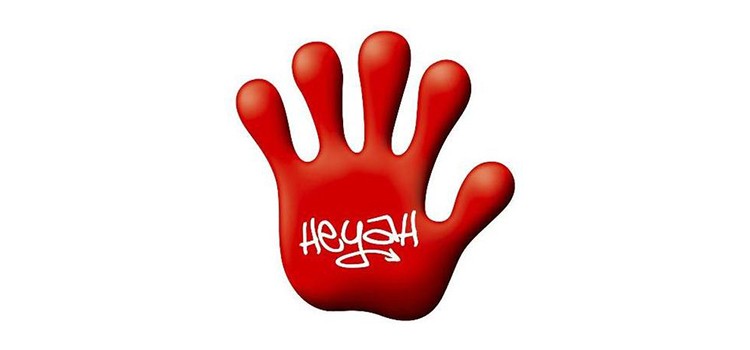
Heyah - how a Polish telecom brand got 300k users in 1 month (8 min read)
Heyah – a polish mobile phone carrier that in 2004 quickly became as popular as established brands. It stood out with its edgy communications that were tailored to a younger audience.

Highlights
- Feb 2004 – The teaser campaign starts. Its logo–without any name–is exposed in the most crowded spaces of the biggest Polish cities, on nadchodzi.pl (“It’s coming”)–a website with wallpapers and ringtones–in internet cafés as screen savers, and in many more ways typical to guerilla marketing
- Mar 13, 2004 – Heyah launches mobile network operations in Poland and reveals
- Mar 23, 2004 – after a strong teaser campaign, over 300,000 clients sent their contact cards (a way to send their new phone number). The website gathered 1,2 million unique users and over 10 million views. Their online shop was visited by over 250,000 users.
- Jun, 2004 – the sales goal for the whole year had been already met
- Fall 2004 – Heyah Club starts. It offers its members discounts at partner shops, an online communicator, blogging space, information services, and more. It’s been closed in 2010
- Oct 10, 2005 – G7, the agency behind Heyah launch, got an Effie award - the ad industry award for the best results. That was the first time a brand got so many jury’s points. The campaign got another statue–received by OMD Poland which planned and bought ad spaces.
The results that got awarded: 54% of the target 15-25 year-old audience recognized the brand. 446% sales plan was achieved

Knowing the target
Heyah started with the basics of the basics. They picked the target audience, defined personas and crafted messaging and marketing actions tailored exactly for that niche. A campaign that resonates well with the target audience is what brings effects–a classic, marketing tactic.
For Heyah, the target niche was young mobile phone users between 15-25 that didn’t have a mobile phone yet and lived in Warsaw–that’s where the most of the marketing was targeted. This allowed the agency to target the audience where it was–for example in internet cafés with preset screensavers that launched after a few seconds of idle time.

Matching the product to the audience
The product is an often overlooked part of marketing. Having a shitty product is a nightmare to market. Having a product not matched well to the audience is another nightmare–unless you make it more ‘theirs’.
Heyah carried a market research on the youth and found out (remember that’s 2004) that their audience is obsessed with texting or calling for just a few seconds–hence cheap SMS and phone calls were introduced. To achieve that, the operator didn’t offer any advanced functions such as MMS, nor subsidized mobile phones.
That was an innovation on a market full of expensive offers with phones for 1 PLN. Before, the key point of carrier offers were the phones–Heyah focused on the core business which is providing SMS and phone call services and not selling mobiles. Since their target audience mostly sent SMS, they offered 0,18 PLN per SMS. That was about a half of what the biggest competitor–Idea–offered at that time (0,34 PLN).

Guerilla marketing
2000s were known for guerilla marketing tactics. Heyah chose to double down on that. They made grafitti in popular spaces, showcased inflatable banners, attached big stickers to other brands’ ads –that exposure combined with curiosity created the desired buzz.
After the launch, another parts of that strategy were launched with billboards saying “Don’t go to the sea” or “Don’t go to the mountains” which were criticized by tourism agencies but also made the new brand more powerful. Under this teaser messaging, there was a second step messaging–”Those infected by Heyah are already there”.

Nailing the messaging
‘Heyah’ was used in the ads as a jingle and greeting. The target audience quickly picked that up and following their favourite ads, they started to say ‘Heyah’ instead of ‘Hey’ or ‘Hi’. That was the moment when not only the brand went viral, it also got written to teenagers’ (and people in early 20s) language.

Nailing the creatives
Creatives are also a variable for the campaign’s success. Heyah went for a street artist or grafitti style and so was the logo’s styling at that time. The creatives were edgy and often unconventional. They didn’t limit themselves to TV or banners but explored innovative digital advertising as well as outdoor actions in Poland’s biggest cities.
The teaser on the launch involved storming cities with Heyah’s logo – on balconies, Palace of Culture and Science in Warsaw (the most iconic landmark of Warsaw), driving a fleet of Trabants (once-popular in Poland cars).

Having a large-enough budget
Heyah was another brand created by PTC (Polska Telefonia Cyfrowa). They had already launched Era, the first mobile phone carrier in Poland, and invested heavily in the product for young generations–the campaign budget was 50 million PLN (around 13 million USD).
That means apart from the creatives, messaging, and the offer, Heyah was literally everywhere–on billboards, TV, they explored the first social media ads and actions (such as the Summer Mobile Training School on Nasza Klasa–a Polish competitor to Facebook; that was the first example of social gaming campaign in Poland).

Speaking to the audience wherever it is
Heyah was great at creating buzz but that also was an outcome of careful ad placement. They sponsored concerts of the most popular hip hop and rock bands, fashion shows and collections, bought ads in a TV channel gathering teenagers (4fun TV), breakdance contests, electronic music festivals, downhill bike, kitesurfing, snowboard, esport contests, and in many other places.

Tools
Graffiti
Billboards
Website
TV ads



Pre-banner blindness
Although 2004 was already full of ads, consumer behavior was different than today. Banner blindness wasn’t that well spread–people were more interested in TV or other display ads. The effects of such campaigns were much better 15 years ago.

Curiosity Gap
Heyah chose to enter the market with a teaser campaign. That meant they ensured most of their target see their logo in a surprising context but with just enough information to spark interest. Human brain is wired to seek missing information.

Von Restorff Effect
Teaser ads are done in an unconventional way (like flooding the city with an unknown logo) get a lot more interest than standard banner creatives. Unusual things are much more memorable to humans.

Personalization
Studies such as the one by Alucent show that personalized ads can be 70% more effective in driving conversions. Hitting the sweet spot in which the target audience perceives the ads as made for them is what always drove results.

Heyah’s example is old any many tactics wouldn’t work now if it wasn’t for our psychology. Humans still fall for the same cognitive biases which can be used to drive attention to your offering.
Getting everything right is timeless, though. If you go really creative, know your audience well, and craft an offering tailored especially to them–you’ll always get results, no matter through which channel.